Last updated on October 10th, 2025 at 08:08 pm
The Corfu Cuisine
The Venetian period introduced a variety of ingredients and culinary methods that transformed the island’s food culture, much like its impact on architecture, literature, and language.
Many traditional Corfiot recipes have Venetian roots but were adapted to local products and climate, creating a flavorful fusion unique to Corfu.
Venetian cuisine favored meats, fish, and game, incorporating spices, pasta, and diverse flavors. This enriched the simpler Mediterranean diet of fish, olive oil, wine, and greens native to the area.
New products brought by the Venetians included tomatoes, beans, peppers, corn, coffee, chocolate, sugar, and exotic spices—some reintroduced after centuries.
The olive tree was also introduced, leading to a shift from vineyards to olive groves, boosting local olive oil production used both in local cooking and exported to Venice.
This combination of local and Venetian elements gave rise to the rich, flavorful Corfiot cuisine known today.
The ingredients of Corfu food
Corfu’s food includes many ingredients introduced during the 20th century. Sadly, three local pasta factories—those of I. Dalietos & Baklis, Kallivokas, and Zafiropoulos—closed decades ago.
While Mediterranean in character, Corfu’s cuisine has distinct Italian influences. It tends to be spicier and more calorie-rich than typical Greek dishes.
A hallmark of Corfiot cooking is marinating foods for hours and slow-cooking over low heat to develop deeper flavors. Herbs such as oregano, garlic, onion, parsley, basil, dill, peppermint, and spearmint are commonly used.
Traditionally, meal preparation was a lengthy process, especially on Sundays when Pastitsada was the main dish—originally made with rooster instead of beef.
Overall, Corfu cuisine is flavorful and hearty, catering to those who enjoy bold tastes.
Corfiot Recipes
Embark on a culinary journey through Corfu, where local ingredients and centuries-old traditions come together to create Corfiot recipes rich in flavor and history.
One notable dish is “Corfu Sofrito,” tender beef simmered in a savory sauce made from garlic, white wine, vinegar, and herbs—a true reflection of Corfiot culinary heritage.
Equally beloved is “Corfu Pastitsada,” pasta coated in a rich tomato sauce spiced with “Spetseriko,” combined with tender veal pieces, representing the island’s food culture.
Seafood fans will appreciate “Corfu Bourdeto,” a spicy fish stew seasoned with herbs and red hot pepper, capturing Corfu’s coastal flavors.
Don’t forget to savor Corfu’s signature kumquat liqueur—a sweet, aromatic drink made from the island’s unique kumquat fruit.
Corfu’s cuisine offers an authentic taste of local culture, blending tradition with bold flavors for an unforgettable culinary experience.
Corfiot Cuisine
Food Tourism / Dining in Corfu
Corfu is not only about sightseeing but also about food experiences. Visitors can enjoy authentic Corfiot dishes in local tavernas, seafood restaurants, and family-run eateries. Many travelers plan their trips around tasting specialties like Pastitsada, Bourdeto, and Sofrito, making dining in Corfu a major attraction. Seasonal festivals, cooking workshops, and local markets also offer immersive culinary experiences for tourists seeking genuine Corfu food.
While enjoying local tavernas, travelers might overhear words used frequently by residents, some of which can be quite surprising.
What is Corfu food? – Recipes of Corfu cuisine
Corfiot cuisine includes a wide variety of delicious dishes. At the top is Pastitsada, the island’s signature recipe, famous for its rich flavors and cultural significance.
Other notable dishes include Bourdeto, a spicy fish stew that highlights the island’s maritime traditions, made with locally caught fish and vibrant spices.
Bianco is another classic, a fish soup with a light broth flavored with fresh seafood ingredients.
Sofrito is also well known—thin slices of veal or beef cooked slowly in white wine with garlic, parsley, and pepper, showcasing slow cooking techniques.
Together, these dishes form a unique and diverse food culture.
Corfu cuisine: Pastitsada
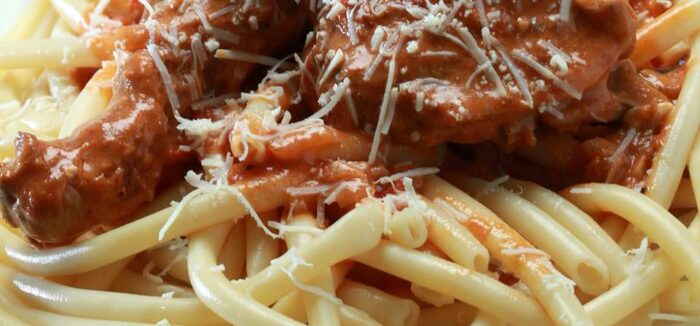
Traditionally made with rooster, or sometimes veal, the meat is slow-cooked with olive oil, a special spice blend called Spetseriko, onions, and optionally garlic. Wine, cinnamon, laurel, nutmeg, fresh tomato pulp, and a touch of sugar add depth to the sauce.
It’s served with thick pasta, generously topped with grated kefalotyri cheese, creating a rich and satisfying dish.
View Corfu Pastitsada RecipePastitsio Dolce – A dish from ancient Rome!
Pastitsio Dolce is a rare and complex recipe dating back to ancient Rome, rarely found in modern restaurants.
It consists of layers of cooked beef, roe, lamb, pork, game birds (such as woodcocks), sausages, boiled eggs, salad, and corn arranged over dough. This is topped with pasta, grated cheese, dill, tomato sauce, pepper, sugar, and more cheese, with another dough layer on top.
Additional layers of sauce, pepper, and cheese finish the dish, resulting in a rich and textured meal.
Because of its heavy ingredients, one portion can exceed 1000 calories. Corfiot cuisine celebrates rich flavors over dieting.
Wild greens
Once the humble meal of poorer families, wild greens are now enjoyed as fresh salads or cooked with olive oil and lemon.
Corfu cuisine: Bianco fish
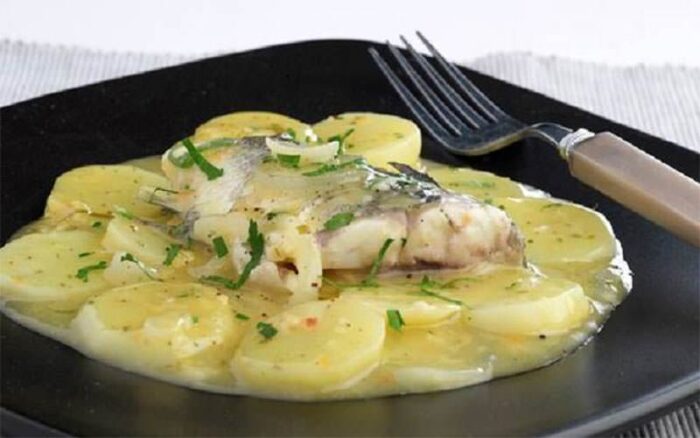
Corfu cuisine: Bourdeto fish
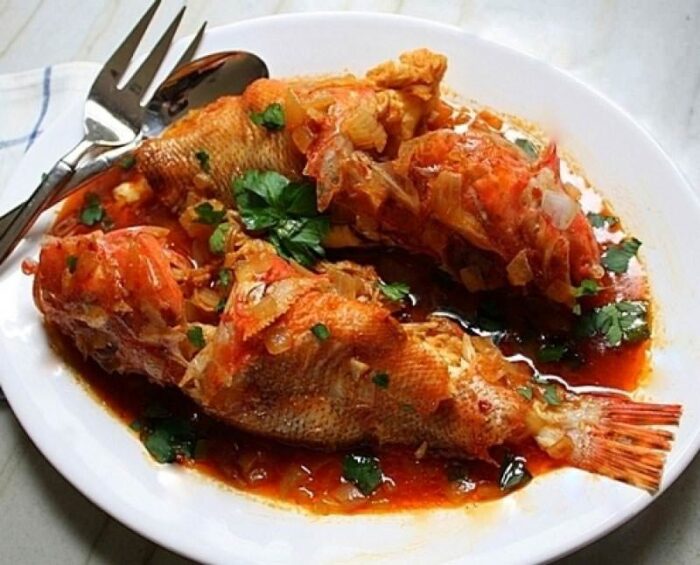
Bourdeto with octopus
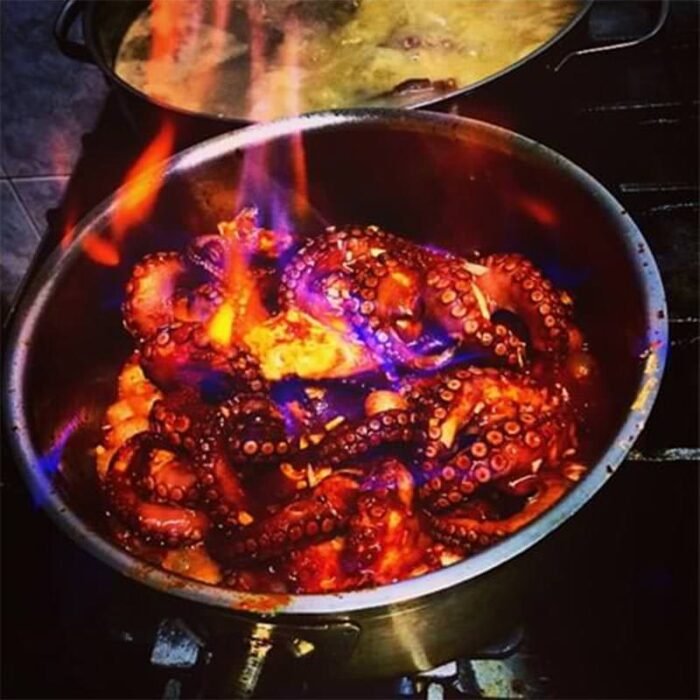
Corfu cuisine: Sofrito with beef

Stacophysy (stock-fish)
Dry hake sautéed with onions and red pepper, then cooked with tomato and sugar.
Tsigareli
Wild greens boiled with chopped onion, garlic, hot red pepper, and salt.
Tsilichourda

Figaddelia
Beef liver slices rolled with garlic, pepper, oregano, and cinnamon.
Corfu cuisine: Sweets and drinks
Sykomaida
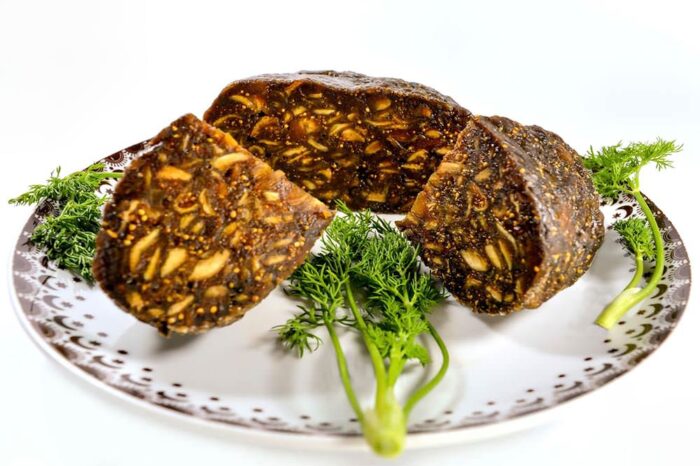
Sykomaida is a sweet made from dried figs soaked in a mix of ouzo, mastic, sweet wine, and pepper, wrapped in walnut leaves.
Ginzollas or otherwise Tzitzifa
A small red fruit resembling large olives, usually eaten dried, with a unique flavor.
Corfu Bolshevikos
A syrupy sweet similar to a large melomakarono.
Fogatsa

Mandolato
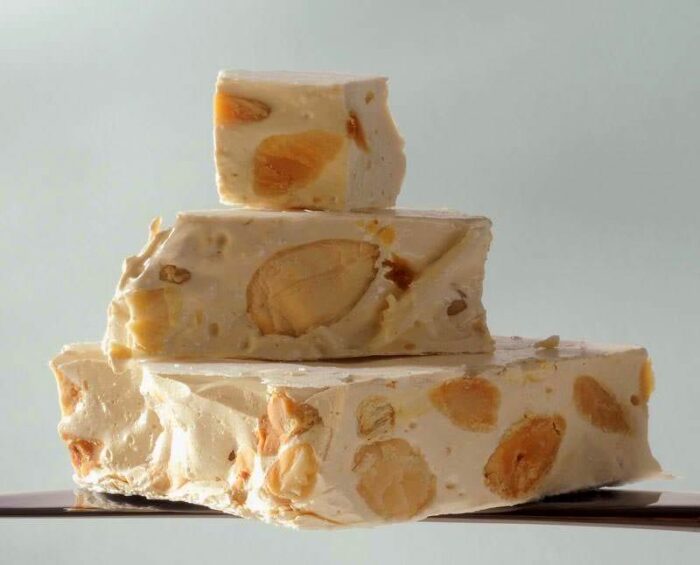
Tzaletia (from Italian Giallo = yellow)
Fried shredded dough coated with sugar and cinnamon, similar to donuts but less oily due to shallow frying.
Special local products
Kumquat
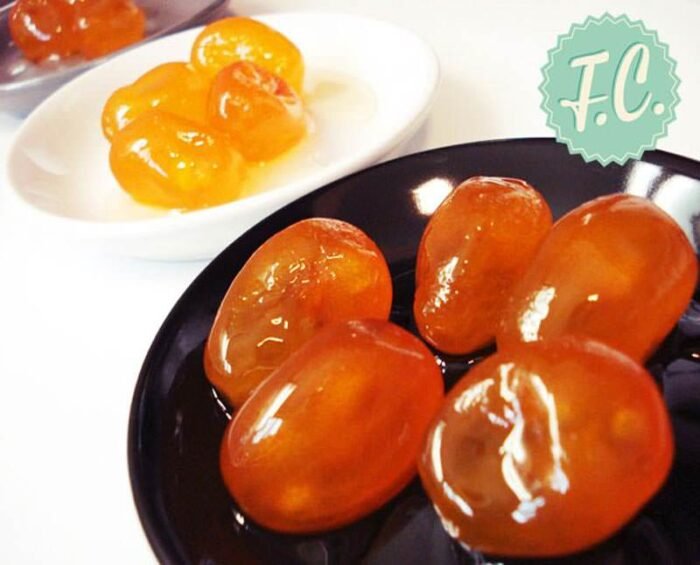
Cheese Corfu
A spicy cow’s milk cheese resembling Italian Pecorino, widely enjoyed locally.
FAQ – Corfu Cuisine & Recipes
What is Corfu cuisine?
Corfu cuisine is a unique branch of Greek gastronomy, influenced by Venetian and Mediterranean flavors. It includes dishes like Pastitsada, Sofrito, Bourdeto, and traditional sweets such as Mandolato and Fogatsa.
What are the must-try Corfiot dishes?
Don’t miss Pastitsada (spiced meat with pasta), Sofrito (veal in white wine sauce), Bourdeto (spicy fish stew), Bianco (light fish soup), and local sweets like Fogatsa and Mandolato.
Are there vegetarian options in Corfu cuisine?
Yes, traditional Corfu recipes include wild greens, Tsigareli (boiled greens with spices), and various vegetable-based dishes and salads.
Where can I taste authentic Corfiot food?
Local tavernas, seafood restaurants, and family-run eateries throughout Corfu offer authentic dishes. Seasonal festivals, cooking workshops, and local markets are also great spots to experience Corfiot cuisine.
Can I cook Corfiot dishes at home?
Absolutely! Many recipes are available online on AtCorfu, and you can also download the free Corfu Cuisine PDF for offline use.
For a complete guide to Corfu’s culture, cuisine, and attractions, visit our Corfu travel guide.


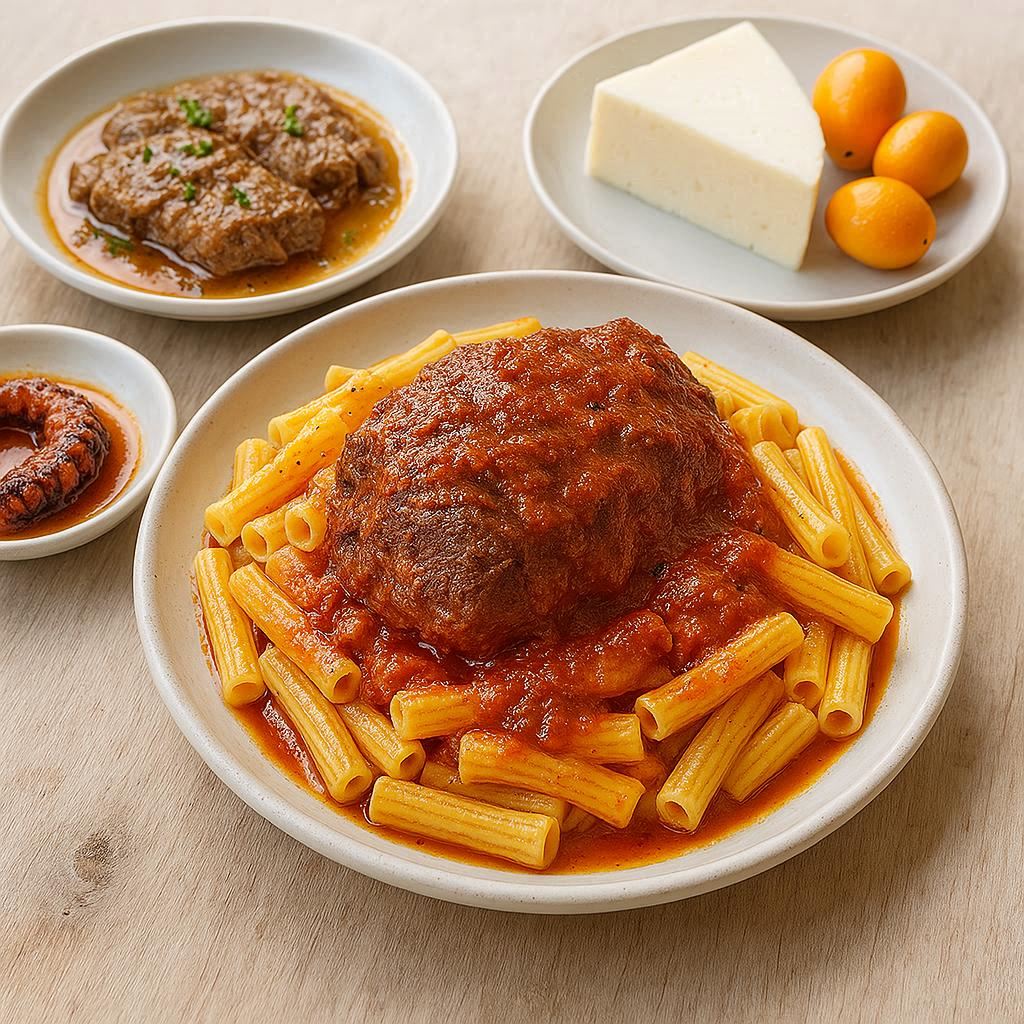


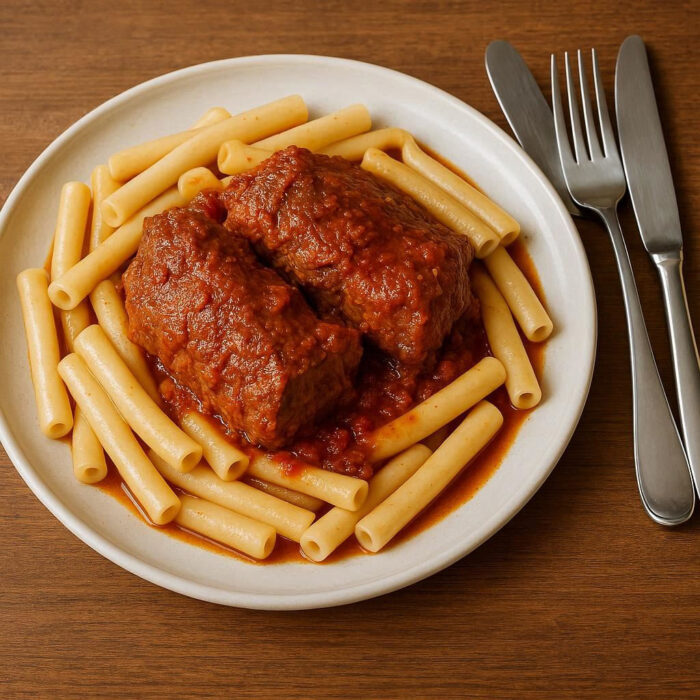
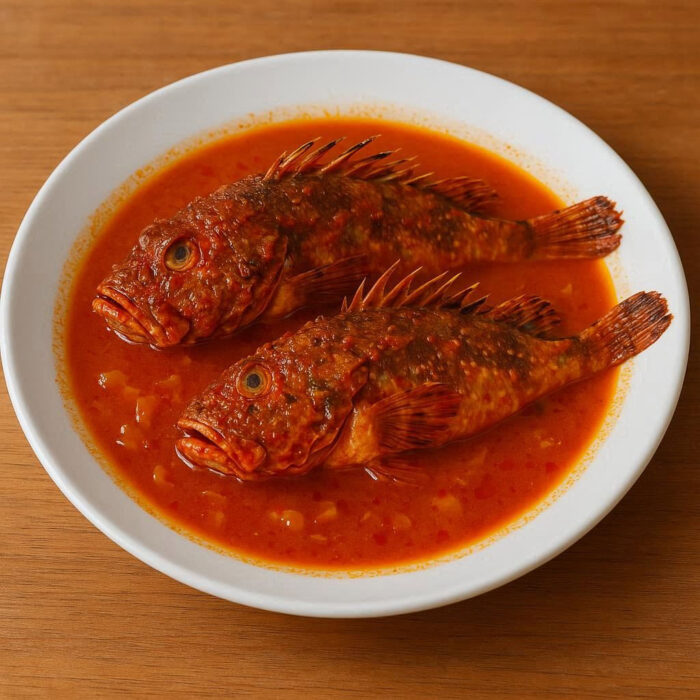



Comments